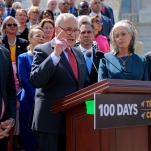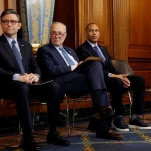Her spine is so curved she can barely stand. What will happen if she loses Medicaid?
Welcome to Where It Hurts, a weeklong series that tells the stories of people in the United States who have gone without health insurance when they needed it most. You can read more from the series here.
Going without has always been the story of health care in the United States. Even with the gains made under the Affordable Care Act, a greater percentage of Americans are uninsured than citizens in most other similarly wealthy countries. We pay more and receive less in return. Things could still get worse.
Recent estimates from the Congressional Budget Office predict that by 2018, the Republicans’ proposed American Health Care Act would increase the number of uninsured people by 14 million. That number will grow to 24 million come 2026. An analysis from the White House puts that increase even higher, at 26 million. That’s nearly the entire population of Texas, the second largest state in the country, losing their coverage all at once.
These are the stories behind those numbers.
Mary is 56 years old. She asked that we not use her full name.
-

-

-

-

-

-

-

-

-

-

-

-

-

-

-

-

-

-

-

-

-

-

-

-

-

-

-

-

-

-

-

-

-

-

-

-

-

-

-

-

-

-

-

-

-

-

-

-

-

-

-

-

-

-

-

-

-

-

-

-

-

-

-

-

-

-

-

-

-

-

-

-

-

-

-

-

-

-

-

-

-

-

-

-

-

-

-

-

-

-

-

-

-

-

-

-

-

-

-

-

-

-

-

-

-

-

-

-












































































































